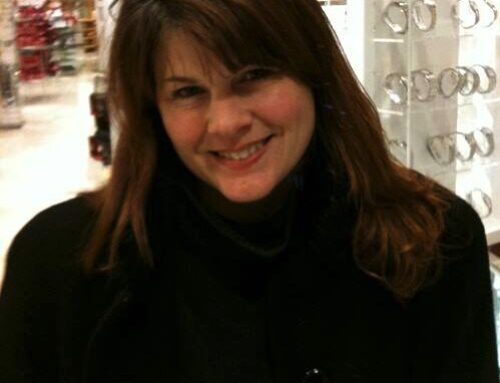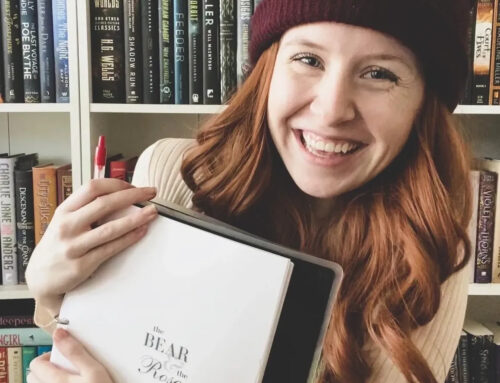 Andi Hayes currently resides in the swamplands of Georgia with her assistant, Bratskulla The Magical Cat. Former singer/keyboardist in a seminal goth/punk/death rock band in L.A. called The Web, she has recorded 2 solo CDs: “Eyeballs in the Ocean” and “The Secret World of Planets.”
Andi Hayes currently resides in the swamplands of Georgia with her assistant, Bratskulla The Magical Cat. Former singer/keyboardist in a seminal goth/punk/death rock band in L.A. called The Web, she has recorded 2 solo CDs: “Eyeballs in the Ocean” and “The Secret World of Planets.”
An animal-loving vegan, she is fascinated with all things to do with rabbit holes, exposing evils, self-evident truths and unexplained mysteries. She was either a mouse or a mermaid in her previous life but was definitely born playing piano. The Rebellious Earthling (a fantasy novel for grown-up adults) is her second novel, with her first being Willow and The Teardrop Forest (an illustrated fantasy novel for child-like adults).
Tell us about your book.
Described as Alice in Wonderland meets Dante’s Inferno, the story takes place on the God-forsaken planet of Tartarus, where souls are taboo, nothing is sacred, and cruelty is a competitive sport. After impulsively accompanying the charismatic son of a Fallen Angel back to his underground kingdom, Ermina finds herself trapped and surrounded by vicious, depraved, demonic creatures. Refusing to participate in any of the sadistic and sordid activities they deem pleasurable, and conflicted by her burgeoning romantic feelings for the morally ambiguous Lord Fairuzo, she must find a way to escape back home to Earth or be eaten alive.
The hidden evils exposed in this hellish realm mirror what, in reality, transpires on Earth, where the infliction of cruelty on the meek and weaker have become not only normalized but encouraged. Most prominent are the myriad ways humans use other species to serve their own self-suiting purposes with no thought as to the desires, feelings or needs of the sentient beings. These immoral acts are presented as altruistic and necessary for the Greater Good by those in control, but it is the apathy, denial, and socially-determined beliefs of the majority that allow them to continue and flourish unchallenged. But even amidst all the darkness and horror, there is a message of hope and strength as well: that a pure soul cannot be corrupted by even the most potent of evil, and it only takes a small percentage armed with the truth to wake up a sleeping planet and kick-start a tsunami of positive change.
Why did you choose to self-publish?
I gave myself a deadline of 3 months to secure the interest of a literary agent. But after 6 weeks of toiling and fretting over 75 personalized query letters, it started to feel like I was chasing something not meant to be. Then I had an epiphany: waiting so needily for that one elusive response of interest and approval felt like I was giving my power away. And I resented it. I also realized that a book under contract wouldn’t even be published for a year or so, and it seemed time was of the essence. So I was actually relieved to move forward on my own!
As a last ditch effort, though, I did consider going directly to a small publisher. But after doing a bit of research, and speaking to other authors who’d gone that route and regretted it, I came to the conclusion that it didn’t seem like a very good deal for the author. The deciding factor was that the author would still be expected to do their own promotion – the one task most writers loathe and would prefer to delegate if at all possible!
 What tools or companies did you use, and what experience did you have?
What tools or companies did you use, and what experience did you have?
I hired myself as proofreader, editor and typist, although I must say in my own defense that I have 10 years of experience in that field, having been paid to perform all those duties in an actual job. I do admit I am the self-taught graphic artist who designed the cover, so I’ll take full blame for that. The woman in chains and flames is an actual oil painting of me done by an artist named Stacy back in the ’90s, but that’s my own seashell-decorated mirror and handiwork above, below and on the back.
My concept for the design was to look like a CD/album cover with a touch of the pulp fiction book covers prevalent in the late ’50s/early ’60s (like D For Delinquent and Satan Was My Pimp). I think I achieved that. I used the GIMP 2 software for the graphics and Xara Page & Layout Design for the final text.
What tips can you give other authors looking to self-publish?
If you’ve already decided you’re going to be your own editor and proofreader, you might want to ponder your credentials and abilities very carefully before proceeding. Don’t be reluctant to admit your own shortcomings when it comes to asking for help. Be succinct in your writing. Treat your words as if they were lumps of clay to be sculpted and molded. Give yourself a reasonable deadline to finish the book by. Set a word count you want to achieve and keep close tabs on it; turn it into a weekly contest for self-encouragement.
It’s also a plus if you were born with an affinity for words and would have won first place in the 6th grade spelling bee if only you hadn’t misspelled “broccoli” (a vegetable that repulsed you when it was overcooked into a slimy mush). Too many self-published books have abominable punctuation and an embarrassing amount of typos; please don’t let your book be one of them. If you only have one typo (like an accidental but mortifying misspelling of chrysoprase), be sure and correct it in the next edition and never let it happen again!
What was your steepest learning curve during the publishing process?
Not so much a learning curve but more of a shock and an obstacle to overcome: I discovered that Amazon won’t stock your book as a Print on Demand if you’ve bypassed them and gone directly to their printer. They’ll automatically advertise your book for sale but with the permanent message “Temporarily Out of Stock.” So you either have to send them the stock of books yourself as seller (under their Fulfilled By Amazon program) or upload your book using their in-house CreateSpace program. It wasn’t like that just a couple of years ago. It took a few weeks of hair-pulling to figure out what the deal was and then rectify the situation. In this case, the old adage of “If you can’t beat ’em, join ’em” was the only solution.
Tell us about the genre you wrote in, and why you chose to write this sort of book.
Fantasy, dystopian, metaphysical, horror, paranormal… I’m transfixed by creepy, shadowy things that scream and rattle chains in the night but then glitter in the sunlight, all while snaking in a subliminal message of spiritual significance. Writing fantasy lets your mind fly free and wild with endless possibilities and transports you into another world. Both dreams and nightmares can be used for inspiration.
Who are your biggest writing inspirations and why?
My inspirations were the most exaggerated of styles from one end of the spectrum to the other, showcasing both beauty and horror: Elegant, eloquent writers, masters of long, flowery, descriptive sentences and fanciful, visionary tales with underlying moral messages like Edgar Allan Poe, Nathaniel Hawthorne, George MacDonald, C.S. Lewis, Oscar Wilde, Lewis Carroll. And gritty, unconventional writers with their own extreme, unique, squalid-but-brutally-honest street styles like Charles Bukowski, Edward Bunker, Hunter S. Thompson and Lester Bangs. Another influence was Rod Serling and the Twilight Zone series – it doesn’t get any creepier or mind-blowing than an episode like “A Nice Place to Visit,” where the guy thinks he’s in Heaven but soon realizes he’s actually in Hell.
Why did you write about this particular subject?
With the main subjects being the condoning of immoral and cruel acts, how animals are perceived by society, and how easy it is to deceive the masses, I would say this: Even more than I dislike being lied to and intentionally deceived by the collective mainstream media, I am perpetually perplexed and appalled by the gullibility of a blindly trusting public that accepts those lies without question, no matter how blatantly questionable they may appear to the few who possess the instincts to ascertain when they’re being lied to.
I also have an innate fascination and adoration for animals that is a passion and an obsession – always has been, always will be. The appalling way they are viewed as products by most of society, the unconscionable way they are treated in just about every industry where money can be made off of them, is never far from my thoughts. I envision that one day the majority will view all animals with the utmost of respect and compassion, demanding they be released from their current suffering and plight. And so I write about this urgent issue to help bring it more quickly to their attention.
What are some of the metaphors or symbolic representations used to convey deeper meanings in your book?
I used the metaphor of a poisonous vaccine forcibly injected into a population to illustrate how easily a society can be seduced, deceived, infected and controlled when an essence of pure evil takes over. The Mirror was selected as a vehicle through which the vampiric demon could best locate the most pliable prey, as those with a narcissistic and self-absorbed vanity are known to be the easiest to corrupt. The trolls represented the majority who find it easier to remain ignorant and in denial, while viewing their souls as inconvenient burdens that interfere with their endless pursuit of instant sensual gratification and fleeting, materialistic pleasure.
What’s next for you as an author?
I’ve started my next book about rebel fringe groups unifying in a world that’s set not too far off in the future. I also have outlines for 5 short stories I’ll be sending individually to magazines or perhaps compiling into one volume. There will definitely be a sequel to Rebellious Earthling as well. The ultimate vision, of course, is to have it made into a movie, perhaps with James Cameron as Director (and myself as Script Supervisor!).
Author Links
Get an Editorial Review | Get Amazon Sales & Reviews | Get Edited | Get Beta Readers | Enter the SPR Book Awards | Other Marketing Services























Andi,
Johnny Forever here (aka Carl Carlyle) Read your book. You are a good writer. Keep it up. Keep going strong.
CC